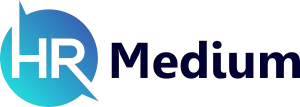In the dynamic landscape of human resources, technology plays a pivotal role in optimizing processes, enhancing employee experience, and driving organizational success.
From onboarding new hires to offboarding departing employees, HR technology streamlines these processes, making them more efficient, transparent, and engaging. This blog explores how technology is transforming key HR functions from start to finish.
The Role of Technology in Onboarding
Enhancing the New Hire Experience
Onboarding is a critical phase in the employee lifecycle. A seamless onboarding experience can significantly impact a new hire’s integration, engagement, and productivity. Technology enables a more structured and engaging onboarding process through:
Automated Documentation
HR software automates the completion and submission of necessary documents, reducing paperwork and administrative workload.
Virtual Orientation
With the rise of remote work, virtual onboarding platforms facilitate comprehensive orientation sessions, helping new hires understand company culture and expectations.
Interactive Training Modules
E-learning platforms provide interactive and personalized training experiences, ensuring new employees acquire essential skills and knowledge.
Streamlining Day-to-Day HR Operations
Efficient Payroll and Benefits Administration
Managing payroll and employee benefits is a complex and time-consuming task. HR technology simplifies these processes by:
Automating Payroll Calculations
Advanced payroll systems automatically calculate salaries, tax deductions, and other compensations, minimizing errors and ensuring timely payments.
Centralized Benefits Management
Employees can access and manage their benefits through self-service portals, improving transparency and satisfaction.
Performance Management and Feedback
Continuous feedback and performance evaluations are crucial for employee development. Technology enhances these processes through:
Real-Time Feedback Tools
Digital platforms enable managers and peers to provide immediate feedback, fostering a culture of continuous improvement.
Goal Tracking Software
Performance management systems track employee progress toward goals, aligning individual efforts with organizational objectives.
Offboarding Made Simple with Technology
Smooth Transition and Knowledge Transfer
Offboarding is as important as onboarding, ensuring a smooth transition and minimizing disruptions. Technology aids in:
Automated Exit Processes
HR systems automate exit formalities, such as clearance procedures, final settlements, and exit interviews.
Knowledge Management Tools
Digital repositories store critical knowledge and documentation, facilitating knowledge transfer and reducing information loss.
Maintaining Alumni Networks
Staying connected with former employees can offer future opportunities. Technology helps maintain these relationships through:
Alumni Portals
Dedicated platforms for alumni help companies stay in touch with former employees, opening avenues for rehiring or collaborations.
Continuous Engagement
Regular updates, newsletters, and events keep ex-employees engaged, fostering a positive employer brand.
Conclusion
The integration of technology in HR processes from onboarding to offboarding has revolutionized the way organizations manage their workforce. By automating routine tasks, enhancing employee experience, and improving efficiency, HR technology empowers organizations to focus on strategic initiatives, ultimately driving growth and success.
Also read: 5 Top Employee Retention Strategies for Small Businesses

